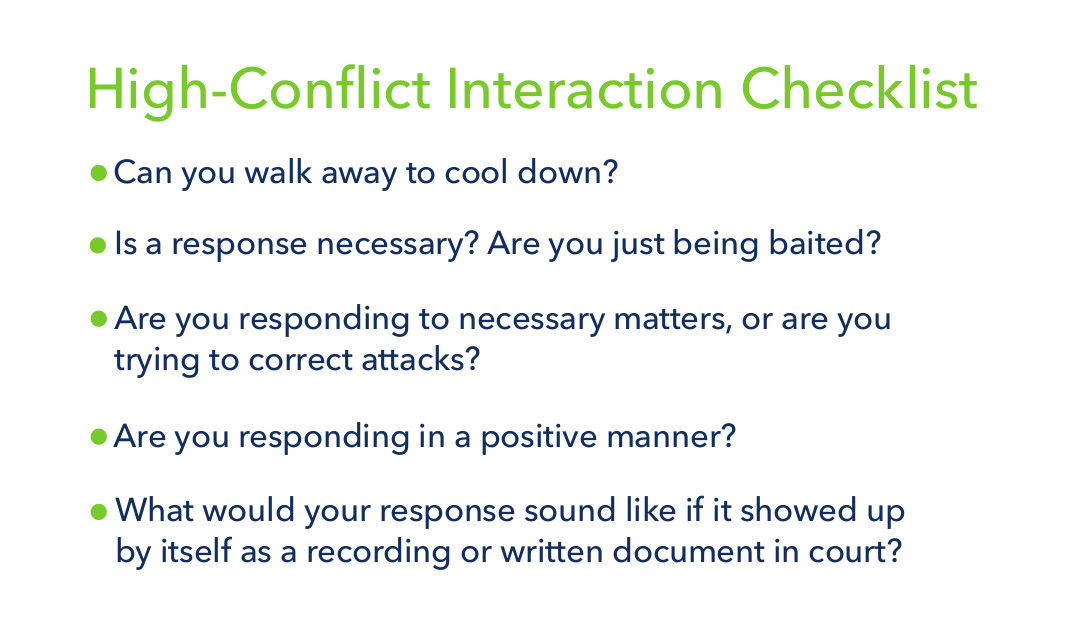We created our High Conflict Checklist to hand out to our clients to help them identify and avoid unproductive interactions in high-conflict situations. Going through a divorce, or any family law litigation for that matter, can be emotionally taxing and exhausting. When you are involved in a high-conflict case, it is very easy to get sucked into unproductive interactions – interactions that could even be harmful to your case. This happens to everyone. While we attorneys can look at a family law case objectively, we have moments in our own lives when it is difficult to remain objective, and when we should consult our own High Conflict Checklist. This is why when divorce attorneys get divorced, they hire a divorce attorney. It is very helpful to have someone advocating for you who is not personally involved in the conflict.
Most people, when confronted with a conflict, have an initial emotional response. That emotional response is not always the best response. That emotional response may be a response that is regretted later. Who hasn’t said something in the heat of the moment that they later regretted? Saying something regrettable in the heat of the moment can be particularly bad for your family law case when you do it in writing, like with an email. You can rest assured that any off-color email you send to the other party will end up as an exhibit at a trial.
Our High Conflict Checklist is geared towards spoken interactions, but can also apply to email interactions. Another tool to use when you receive an inflammatory email is to draft a response email, and then let that response sit for a few hours. Then give the response another read through before sending it. Odds are good that after having some time to cool off, you will make some revisions to tone down that response. It can also be helpful to limit the number of emails you send to the other party in the course of a day. It can be easy to get involved in a heated back-and-forth email battle. On the other hand, if you have a rule that you only send one response email a day, or that you only respond to email at one or two particular times per day, you can avoid the back-and-forth battle.

